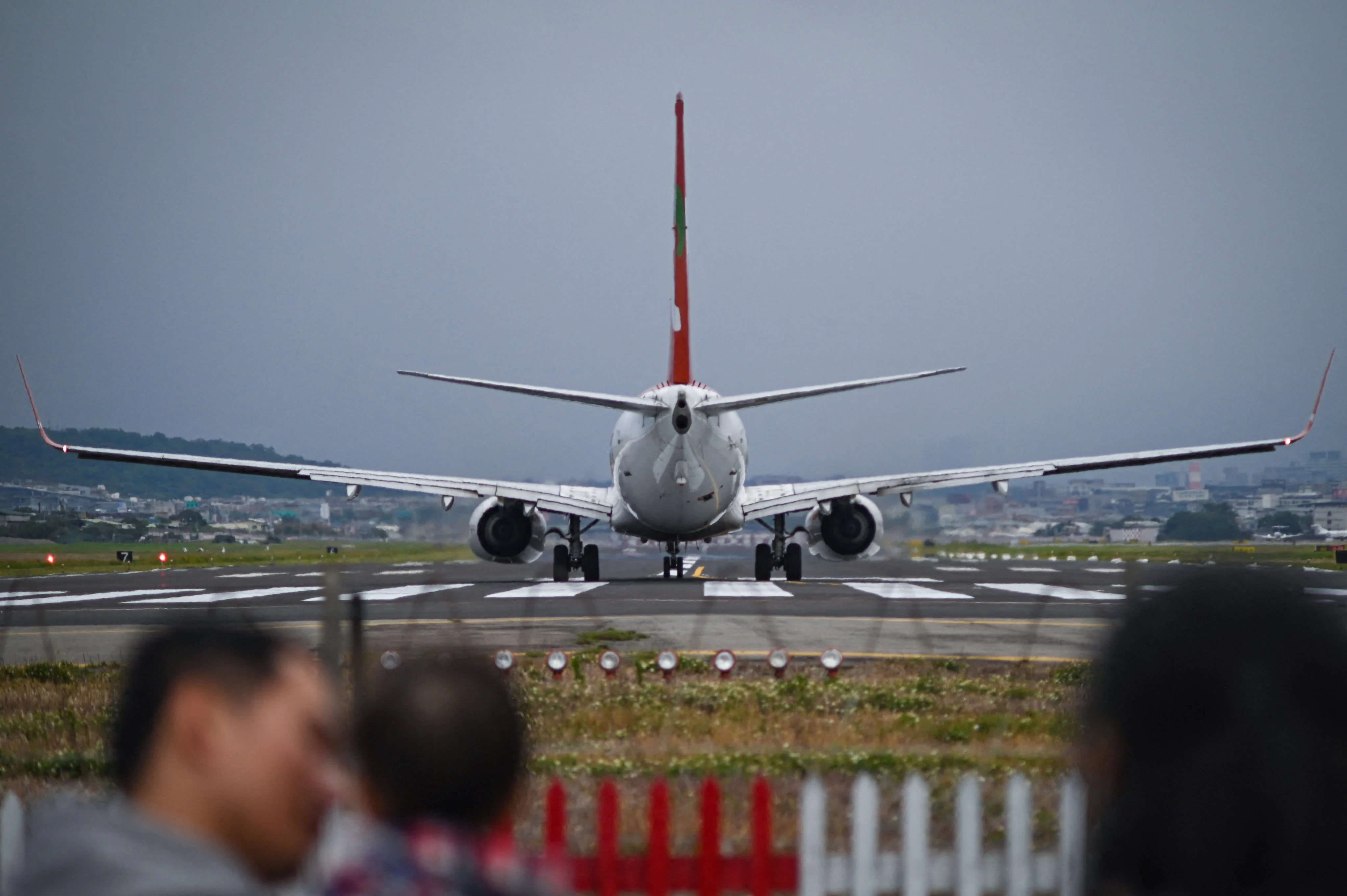By Lawrence Chung
Beijing’s sudden activation of another civilian air route near the Taiwan Strait’s unofficial median line has renewed alarm in Taipei, with defence experts and lawmakers warning the move could raise the risk of miscalculation in an already tense air corridor.
The mainland’s Civil Aviation Administration activated the last of three branches off the M503 north-south flight path through the strait on Sunday.
The M503 and its offshoots were established in 2015 to connect various cities along the mainland’s east coast. Two of the branches were activated last year and the third, the W121, on Sunday.
At its closest point, the M503 route lies just 4.2 nautical miles (7.8km) from the unofficial line dividing Taiwan and mainland China.
The administration, which made the decision without consulting Taipei, said the “technical adjustment [was meant] to alleviate air traffic pressure and improve safety”.
“Previous changes to the route have improved the operation of cross-strait flights and further facilitated personnel exchanges across the Taiwan Strait,” the administration said.
But Taiwanese authorities described it as a unilateral breach of a 2015 consensus and a destabilising act that further eroded cross-strait trust.
“Both sides reached an understanding in 2015 that the M503 route would be offset 6 nautical miles west and used only for southbound flights, and that the activation of connecting routes W121, W122, and W123 would require mutual communication,” Taiwan’s Mainland Affairs Council (MAC) said on Monday.
The MAC accused Beijing of now having violated that consensus three times, including the activation of W122 and W123 branch routes last year without prior notice.
The route became a flashpoint in cross-strait tensions in 2018 when Beijing announced the operations of northbound services on the flight path. Taiwan said the move was made unilaterally while Beijing insisted that it was in line with international aviation practice.
“These unilateral actions alter the status quo and escalate tensions across the strait and the broader region,” it said, questioning Beijing’s rationale for the decision.
“Mainland China’s international air traffic has not returned to pre-Covid levels, and W121 is not a cross-strait route. How can this be seen as facilitating cross-strait travel? Such claims clearly lack legitimacy.”
Taiwan’s Civil Aviation Administration said the move increased airspace complexity and risk within the Taipei Flight Information Region, particularly around the outlying islands of Quemoy – also known as Kinmen – and Matsu.
“Under International Civil Aviation Organisation (ICAO) regulations, any changes to air routes must be coordinated with relevant parties,” the agency said, adding that it had instructed air traffic control units to closely monitor activity and called on Beijing to initiate communication to ensure flight safety.
Lawmakers from the ruling Democratic Progressive Party (DPP) accused Beijing of violating international norms and trying to undermine Taiwan’s air defences.
“These actions reduce Taiwan’s early-warning time and are part of a broader effort to erase the legal foundation of the median line,” DPP legislator Wu Szu-yao said, referring to an unofficial boundary in the strait between Taiwan and the mainland.
Fellow DPP lawmaker Wang Ting-yu added there was no pressing need for such a “politically and strategically sensitive” route, given the mainland’s aviation traffic was still below pre-pandemic levels.
“Politically, this comes just ahead of Taiwan’s Han Kuang military drills and within the first year of a new US Trump administration – potentially testing responses from Washington and the region.”
Taipei will launch its biggest annual war games – a 10-day round-the-clock exercise – on Wednesday.
Wang said the move compromised civil aviation safety and increased pressure on Taiwan, while also raising concerns among neighbours, including Japan, South Korea and the Philippines.
The M503 route cuts through overlapping air defence identification zones claimed by Taiwan and mainland China and skirts four restricted airspaces monitored by Taiwan’s air force. The newly activated W121 runs close to the airspace surrounding Quemoy and Matsu – two sensitive offshore islands administered by Taipei.
Su Tzu-yun, a senior analyst at Taiwan’s government-funded Institute for National Defence and Security Research, warned that the W121 route could shrink Taiwan’s air defence response time to as little as 30 seconds.
“This compresses Taiwan’s air defence depth,” Su said. “It’s part of Beijing’s broader effort to normalise the erosion of the median line.”
Su also flagged concerns about possible People’s Liberation Army tactics of using civil flight paths to mask military aircraft, which could complicate Taiwan’s early warning systems.
Lin Ying-yu, a professor of international relations and strategic studies at Tamkang University in New Taipei City, said Beijing might be using the activation to reinforce its one-China narrative in international bodies such as the ICAO, which recognises only mainland China.
Still, Lin noted, the W121 route “poses limited direct military threat”, given that Taiwan’s advanced radar and missile systems could differentiate between civilian and military aircraft.
Beijing regards Taiwan as part of its territory and has not ruled out using force to bring the island under its control.
Like most countries, the United States does not recognise self-governed Taiwan as an independent state, but it opposes any forcible change to the cross-strait status quo and is legally obliged under the Taiwan Relations Act to help the island defend itself.
